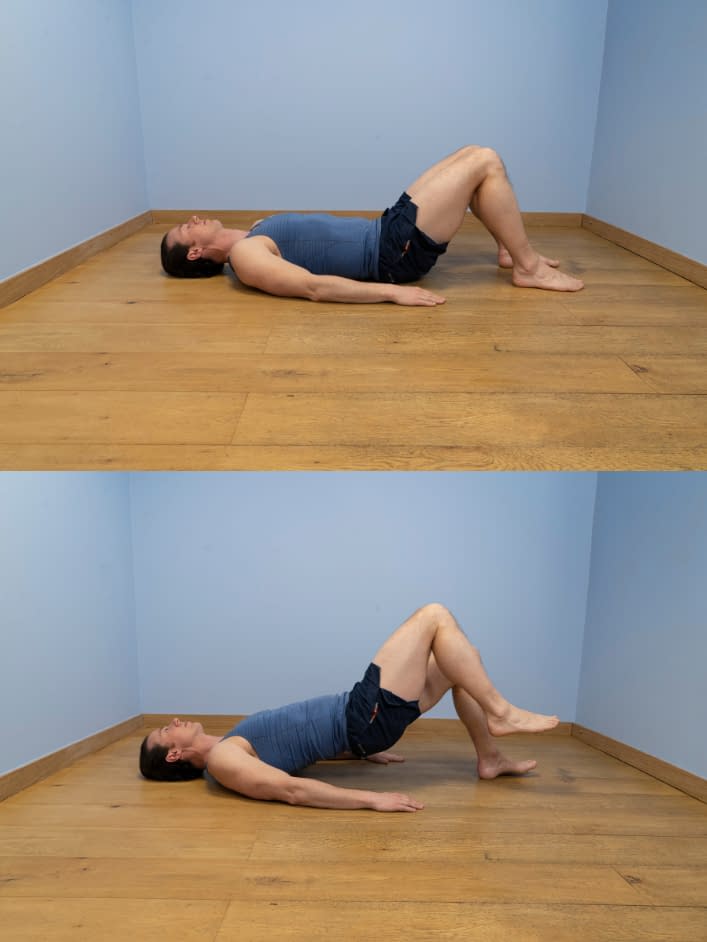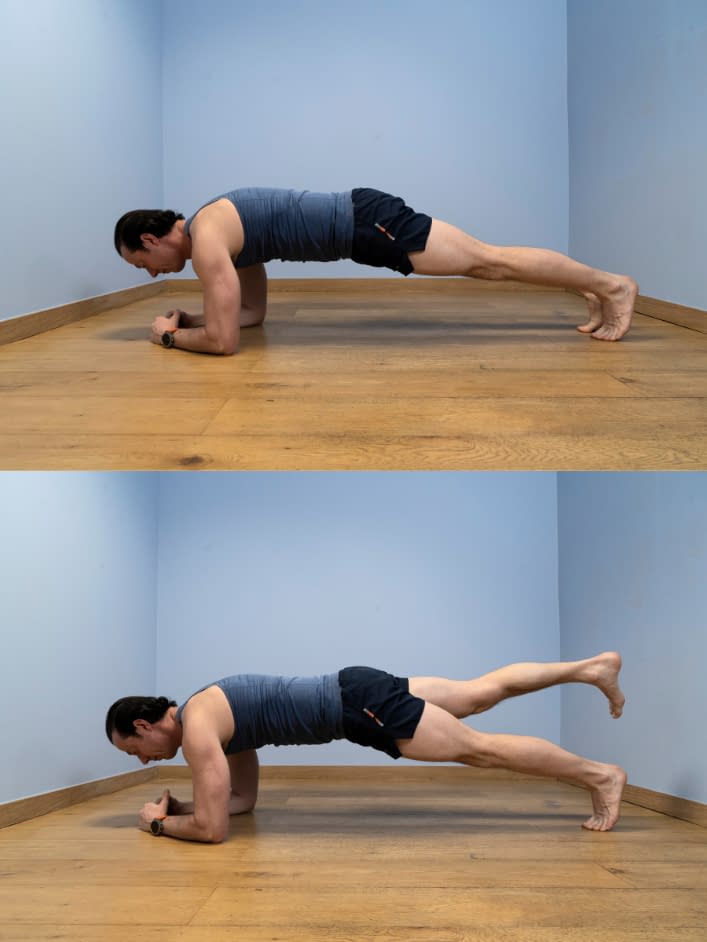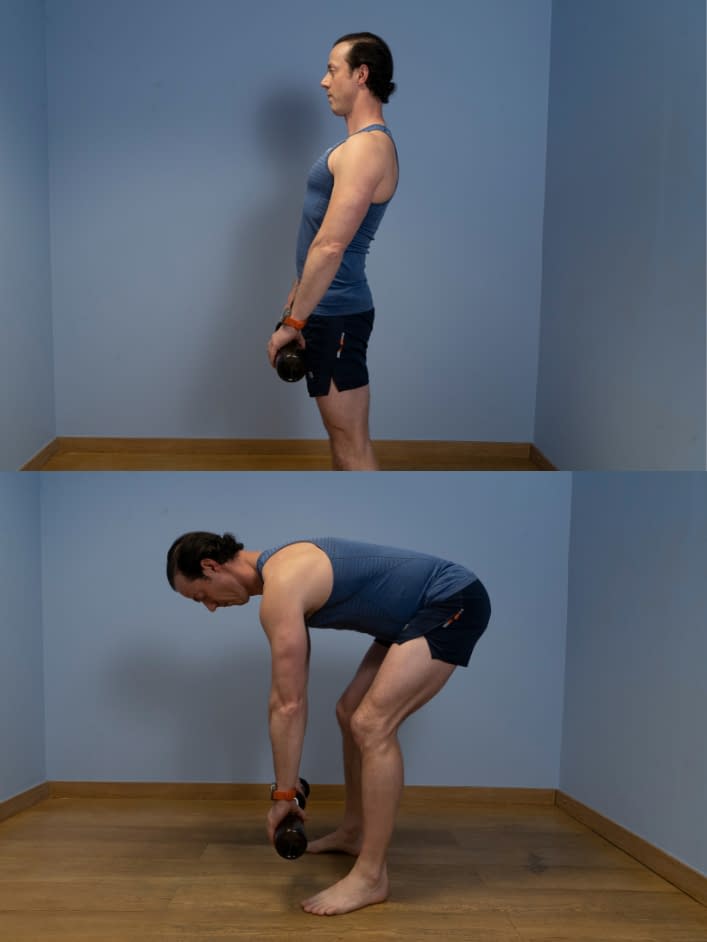Low Back Pain and Sciatica Advanced Exercise Programme
Aim to perform this programme a minimum of once per day unless prescribed otherwise. As with any new exercise, start slowly (repetitions as able) and build up as you are able within the guidelines below.
Pain should not exceed 4/10 whilst completing this exercise programme.
1. Bridge with leg lift
- Lie on your back on the floor or bed with your knees bent at 90 degrees and your feet on the floor and your arms down by your side.
- Push your heels down into the floor to gently lift your hips upwards. Lift as high as you feel comfortable but no higher than a straight line between hips, knees and shoulders.
- If you feel discomfort, then try squeezing your tummy and bum muscles before starting the lift.
- From this position lift one leg slightly off the floor and return.
- Repeat on the opposite side.
- Try and keep the pelvis still.
2. Plank with leg lift
- Lie on your front.
- Keeping your knees on the floor lift up onto your elbows.
- From this starting position lift one leg 2-3 inches off the floor. Place back down and then repeat on the other leg.
- Try to keep the hips/pelvis still at all times.
- If this is too difficult you can perform the same exercise with the knees on the floor.
3. Deadlift
- Stand upright with feet hip-width apart, a slight knee bend and a weight held in both hands.
- Engage the abdominal region and in a controlled manner, bend forward at the hips trying to keep your back straight. Do not let your knees bend further. Let your hips press out backwards.
- Go down as far as you feel comfortable or until your back starts to round.
- Come back up to standing and repeat.
We recommend consulting a musculoskeletal physiotherapist to ensure exercises are best suited to your recovery. If you are carrying out an exercise regime without consulting a healthcare professional, you do so at your own risk. If you have any concerns whilst completing these exercises, please contact a healthcare professional.
More Plans
This programme focuses on maintaining a range of movement within the lower back and low-level exercises aimed at the affected sciatic nerve. It is important not to further irritate the nerve so always work to a point of mild self-perceived tension only. We suggest you carry these exercises out daily prior to progressing onto the next stage of rehabilitation when your pain and function allow. Pain should not exceed 3/10 on your self-perceived pain scale whilst completing this exercise programme.
- 0
- 1
- 2
- 3
- 4
- 5
- 6
- 7
- 8
- 910
This is the next progression. More focus is given to progressive loading of the lower back and core with further exercises aimed specifically at the sciatic nerve. It remains important not to further irritate the nerve so always work to a point of mild self-perceived tension only. Pain should not exceed 3/10 whilst completing this exercise programme.
- 0
- 1
- 2
- 3
- 4
- 5
- 6
- 7
- 8
- 910


